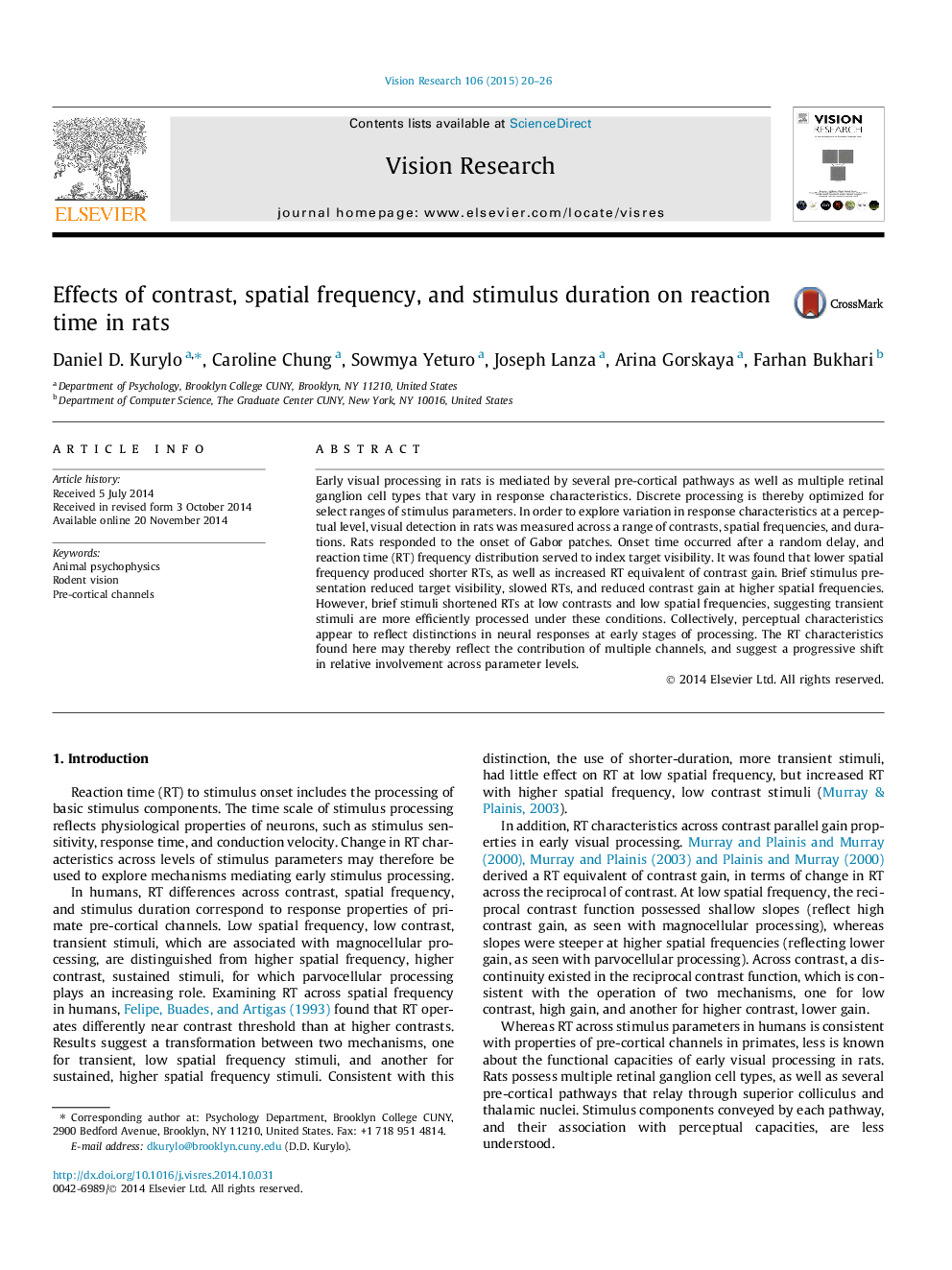| Article ID | Journal | Published Year | Pages | File Type |
|---|---|---|---|---|
| 4033680 | Vision Research | 2015 | 7 Pages |
•Reaction time (RT) distributions to stimulus detection was measured in rats.•RT characteristics distinguished ranges of spatial frequency and stimulus duration.•Results support a two-channel model of early visual processing in rats.
Early visual processing in rats is mediated by several pre-cortical pathways as well as multiple retinal ganglion cell types that vary in response characteristics. Discrete processing is thereby optimized for select ranges of stimulus parameters. In order to explore variation in response characteristics at a perceptual level, visual detection in rats was measured across a range of contrasts, spatial frequencies, and durations. Rats responded to the onset of Gabor patches. Onset time occurred after a random delay, and reaction time (RT) frequency distribution served to index target visibility. It was found that lower spatial frequency produced shorter RTs, as well as increased RT equivalent of contrast gain. Brief stimulus presentation reduced target visibility, slowed RTs, and reduced contrast gain at higher spatial frequencies. However, brief stimuli shortened RTs at low contrasts and low spatial frequencies, suggesting transient stimuli are more efficiently processed under these conditions. Collectively, perceptual characteristics appear to reflect distinctions in neural responses at early stages of processing. The RT characteristics found here may thereby reflect the contribution of multiple channels, and suggest a progressive shift in relative involvement across parameter levels.
